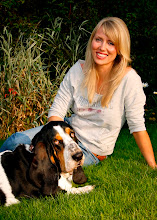
Ever wondered why your cat eats grass or wags its tail? Here’s a brief run down on common cat behaviours, to help you understand your feline friend.
- A purring cat is not necessarily a happy cat. Cats purr when in pain, distressed or giving birth. Cats in pain will purr when approached by people; this suggests cats purr to show they’re friendly and approachable - ready to be comforted or helped. Kittens purr to communicate to its mother that it’s well and content.
- Kneading is when a cat extends and retracts its claws – this usually happens when resting on its owner's lap. This behaviour comes from kittenhood. Kittens knead their mother while suckling to make the milk flow more freely. Adult cats do this when they feel safe and contented. If a cat dribbles or sucks at the owners’ clothes whilst kneading or purring, this is an indication that the cat may have been taken from its mother too early.
- Eating grass often occurs when your cat needs to clean out its stomach by vomiting (e.g. get rid of fur balls). If your cat doesn’t have access to grass, house plants or anything similar will be eaten! It’s been said that cats eat grass to obtain Folic Acid, something that cats need in small quantities for its well-being.
- Taking food out of the bowl and eating it off the floor is very common. Two theories as to why your cat behaves this way are that cats find the pieces of food too large, put them outside of the bowl so it’s easier to chew into smaller pieces. Or if the cats’ whiskers touch the side of the bowl, he may find this uncomfortable to eat, so he’ll scoop the food out.
- A wagging tail could mean your cat is angry or he’s feeling indecisive – the cat wants to do two things at once and cannot make up its mind which action to take.
- Cats bury their faeces so as not to demonstrate its presence to more dominant cats; a dominant cat will leave its faeces uncovered. A cat kept on their own will bury its faeces in the litter tray, suggesting the cat feels its owner is dominant. But in households with more than one cat, you’ll often find one or two cats leave their faeces uncovered, while the rest will cover it up.
- Cats greet one another by rubbing their faces, so when yours stands on its back legs, he’s simply trying to reach your face! This greeting is only done to humans the cat trusts. Cats have scent glands on their temples, around the mouth and base of the tail. If a cat rubs itself against you, it’s rubbing off its scent, saying "this is mine".

